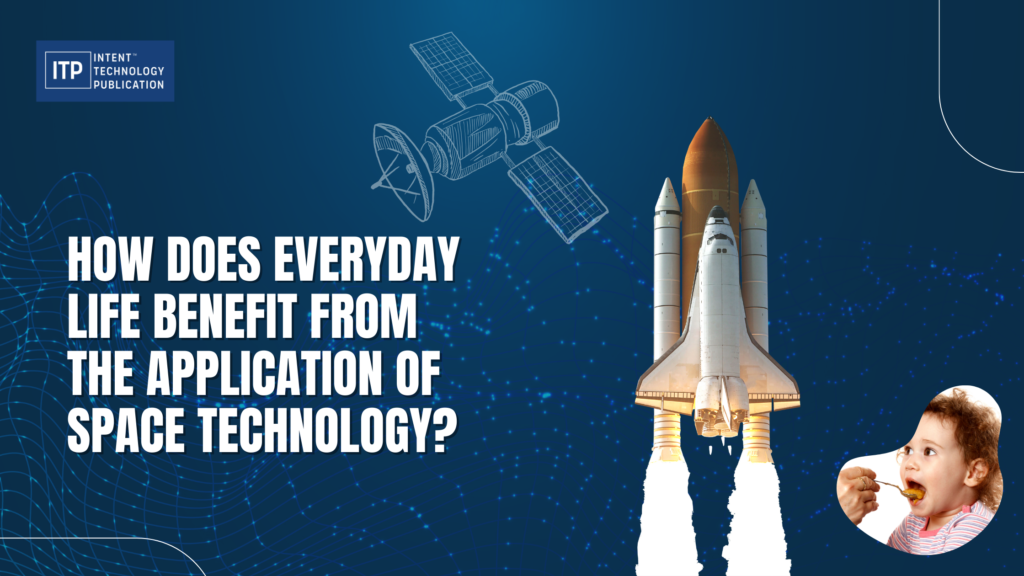or call: +1 (845) 347-8894

or call: +1 (845) 347-8894
or call: +1 (845) 347-8894

NASA-backed research into algae initially aimed at its potential as a recycling agent for long space missions surprisingly led to the creation of baby formula. Nutrient-rich algae containing Docosahexaenoic Acid (DHA) and Arachidonic Acid (ARA) were beneficial for infants’ mental and visual development.
The innovative technologies developed by NASA for expanding our understanding of space have transcended their original purpose, finding practical applications in our daily lives. Inventions initially conceived to facilitate space exploration—such as portable vacuum cleaners, blankets, invisible braces, and more—now reside in our households. Additionally, a spectrum of advancements, including cardiac pumps, artificial limbs, the Internet, and camera sensors, owe their origins to pioneering space research.
NASA and similar space organizations dedicated extensive research to enhance space exploration and communication with shuttles. After publicizing their inventions and findings, developers repurposed space technology for everyday use. A few notable examples of these technologies are:
Embedded Web Technology and IoT: Initially developed by NASA for remote experiments on the ISS, embedded web technology eventually birthed the Internet of Things (IoT). IoT connects electronic devices to the internet, enabling remote access. For instance, devices like Google Home function as both speakers and virtual assistants. Today, IoT pervades wearables, smart homes, and smart cities, offering enhanced customer experiences, operational efficiencies, and business model innovations.
Camera Sensors: NASA scientist Eric Fossum’s research aimed to shrink cameras for space missions, leading to the creation of the CMOS image sensor. Despite signal noise issues, Fossum adapted CMOS active pixel sensors using CCD technology. These sensors revolutionized digital imaging and are now integral to smartphone and GoPro cameras.
GPS: Satellites launched by space organizations contribute to the GPS network, facilitating global location pinpointing and supporting navigation services like Google Maps. Integrating GPS with AI and machine learning enables autonomous vehicles to operate safely, as seen in autonomous tractors managing planting, fertilizing, and harvesting.
Communication and Internet: Orbiting satellites facilitate mobile communication and internet connectivity, reshaping global connectivity and work dynamics. Internet speeds, especially with the advent of 5G, are exponentially increasing, enhancing services across sectors, from banking to education.
Rail Monitoring Sensors: NASA’s RotoSense, originally designed to predict helicopter transmission failures, found new life as RailSafe, monitoring train axle vibrations to detect rail flaws. This innovation, adopted by a Tennessee-based company, has significantly bolstered train safety and lower maintenance costs.
Space technology is rapidly advancing, ushering in an era where science fiction becomes a tangible reality. Space agencies, driven by escalating funding, intensify research and development for space exploration. The landscape expands further with private entities like SpaceX and Blue Origin delving into private missions and pioneering space tourism. As the space exploration sector continues to burgeon, the future promises even greater strides. Envisioned prospects include space tourism and eventual space colonization, with entities like SpaceX aiming for missions like Mars One, aspiring to establish colonies on Mars. Simultaneously, Blue Origin tests reusable rockets, potentially reducing the cost of space travel. Astronomers, in their pursuit, unearth new celestial bodies, enriching our comprehension of the universe’s genesis and quest for extraterrestrial life and resources.
With ongoing innovations and discoveries, space technology is democratizing, rendering existing technologies more cost-effective and advanced. Progress in this realm is set to enhance climate understanding and bolster broadband connections. Moreover, the evolution of spacecraft and rockets will reshape terrestrial travel, with suborbital point-to-point journeys like the Hyperloop on the horizon. Envision swift travel from New York to London in under an hour via hypersonic alternatives.
This surge in space technology will reshape various industries. Manufacturing stands to benefit from opportunities to produce components vital for spacecraft and rockets. Software companies will seek diverse expertise to craft solutions for space exploration. Harnessing artificial intelligence and machine learning will be pivotal for engineers and researchers delving into space ventures.
Fuel demands for spacecraft and rockets necessitate a focus within the energy sector on renewable and alternative fuel development. Employing big data analytics will enable organizations to glean insights into space technology trends and their impact on respective industries.
With burgeoning interest, space research and exploration have become fiercely competitive. Adapting to the changing trends and understanding the potential of space technology becomes imperative for organizations seeking a prominent role in this dynamic landscape.
